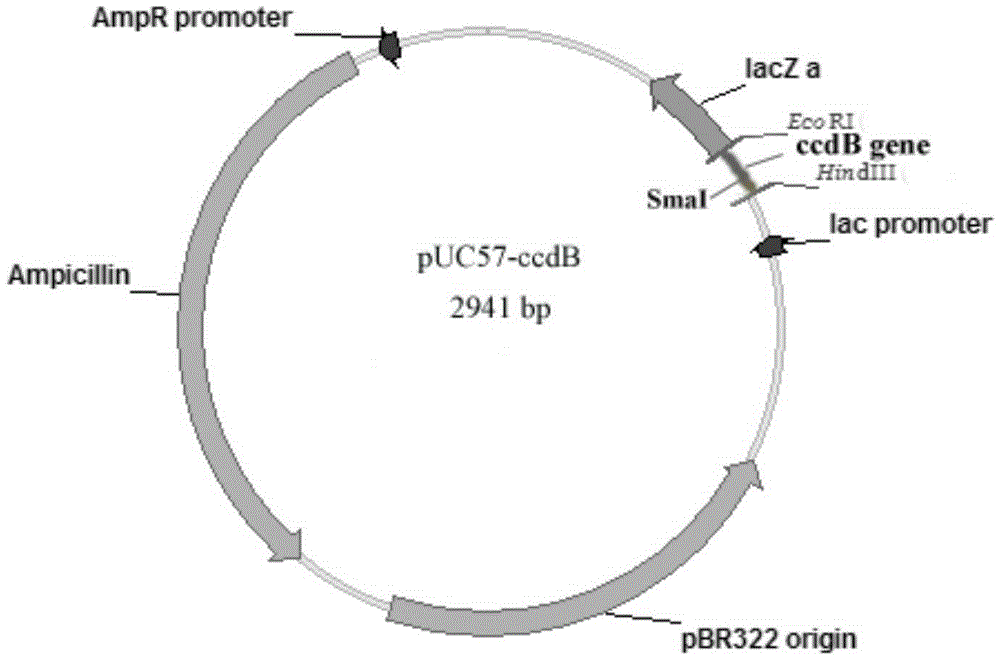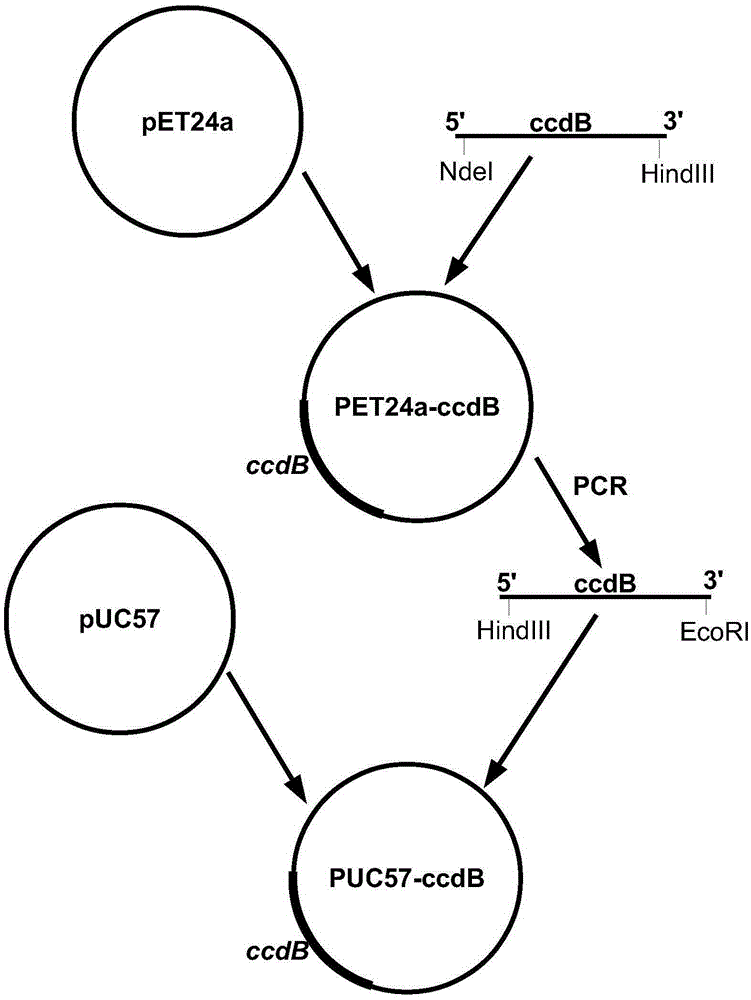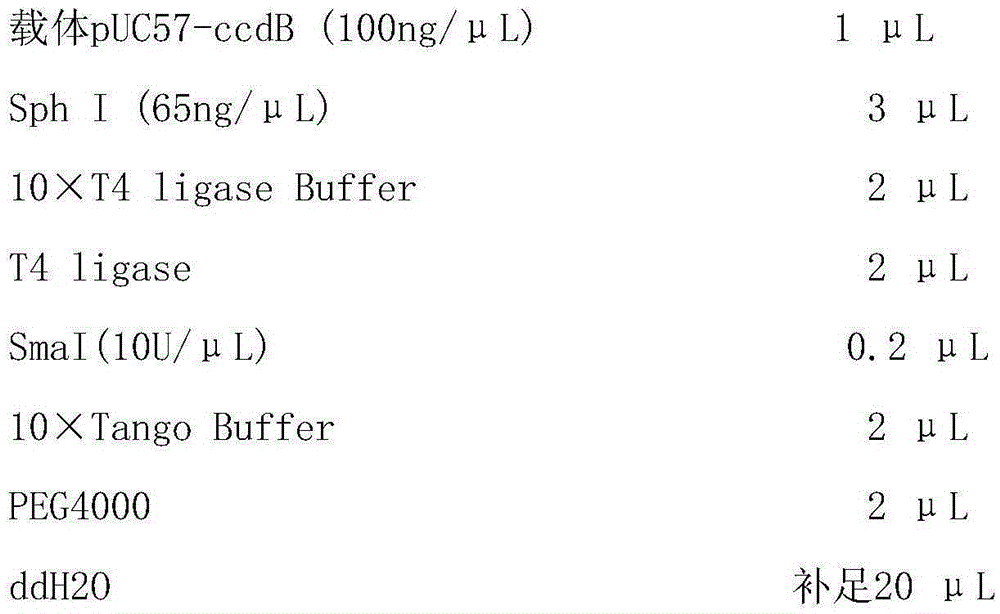Cloning vector and preparation and application thereof
A cloning vector and vector technology, applied in the field of genetic engineering, can solve problems such as increased experimental cost, high price, and inability to grow
- Summary
- Abstract
- Description
- Claims
- Application Information
AI Technical Summary
Problems solved by technology
Method used
Image
Examples
Embodiment 1
[0035] Example 1: Construction of vector pUC57-ccdB
[0036] 1. Synthesis of 1ccdB gene
[0037] The gene was synthesized by overlap extension PCR, firstly, ccdB-1, ccdB-2, ccdB-3, ccdB-4 were used as the first set of primers, and ccdB-3, ccdB-4, ccdB-5, ccdB-6 were used as the second set Primers, ccdB-5, ccdB-6, ccdB-7, and ccdB-8 are the third set of primers PCR to obtain three small ccdB gene fragments, and then use the mixture of these three fragments as a template to use primers ccdB-1 and ccdB -8PCR to obtain the complete ccdB gene. The obtained gene was detected by 1.5% agarose gel electrophoresis, and the target fragment was recovered with the "SanPrep Column Gel Recovery Kit" provided by Sangon (Bioengineering) Co., Ltd. to obtain the ccdB gene synthesis product.
[0038] The primer sequence of synthetic ccdB gene is as follows:
[0039] ccdB-1 (SEQ ID NO: 3):
[0040] 5'-cggcaattc catatg caatttaaggtgtatacctacaaacgtgaatctcg-3' (with NdeI)
[0041] ccdB-2 (SEQ I...
Embodiment 2
[0058] Example 2: Application of vector pUC57-ccdB
[0059] The target fragment amplified by high-fidelity enzyme PCR was recovered and mixed with the carrier pUC57-ccdB, added with SmaI restriction endonuclease, T4 DNA ligase, etc., and digested and ligated overnight at 22°C. Three genes with different lengths of about 800bp (restriction enzyme SphI gene), 1200bp (restriction enzyme XmnI gene), and 2500bp (TaqDNA polymerizing gene) are used as examples for illustration.
[0060] 2.1 Construction of pUC57-ccdB-SphI
[0061] The SphI gene was obtained by PCR with Pfu enzyme, and after detection by 1% agarose gel electrophoresis, the PCR product was purified by a gel recovery kit, and the concentration was determined to be 65 ng / μL by a microplate reader after purification.
[0062] The enzyme digestion ligation system is as follows:
[0063]
[0064] Ligation overnight at 22°C. Take 10 μL of the ligation product to transform Escherichia coli DH5α competent cells, pick 10 ...
PUM
 Login to View More
Login to View More Abstract
Description
Claims
Application Information
 Login to View More
Login to View More - R&D
- Intellectual Property
- Life Sciences
- Materials
- Tech Scout
- Unparalleled Data Quality
- Higher Quality Content
- 60% Fewer Hallucinations
Browse by: Latest US Patents, China's latest patents, Technical Efficacy Thesaurus, Application Domain, Technology Topic, Popular Technical Reports.
© 2025 PatSnap. All rights reserved.Legal|Privacy policy|Modern Slavery Act Transparency Statement|Sitemap|About US| Contact US: help@patsnap.com



